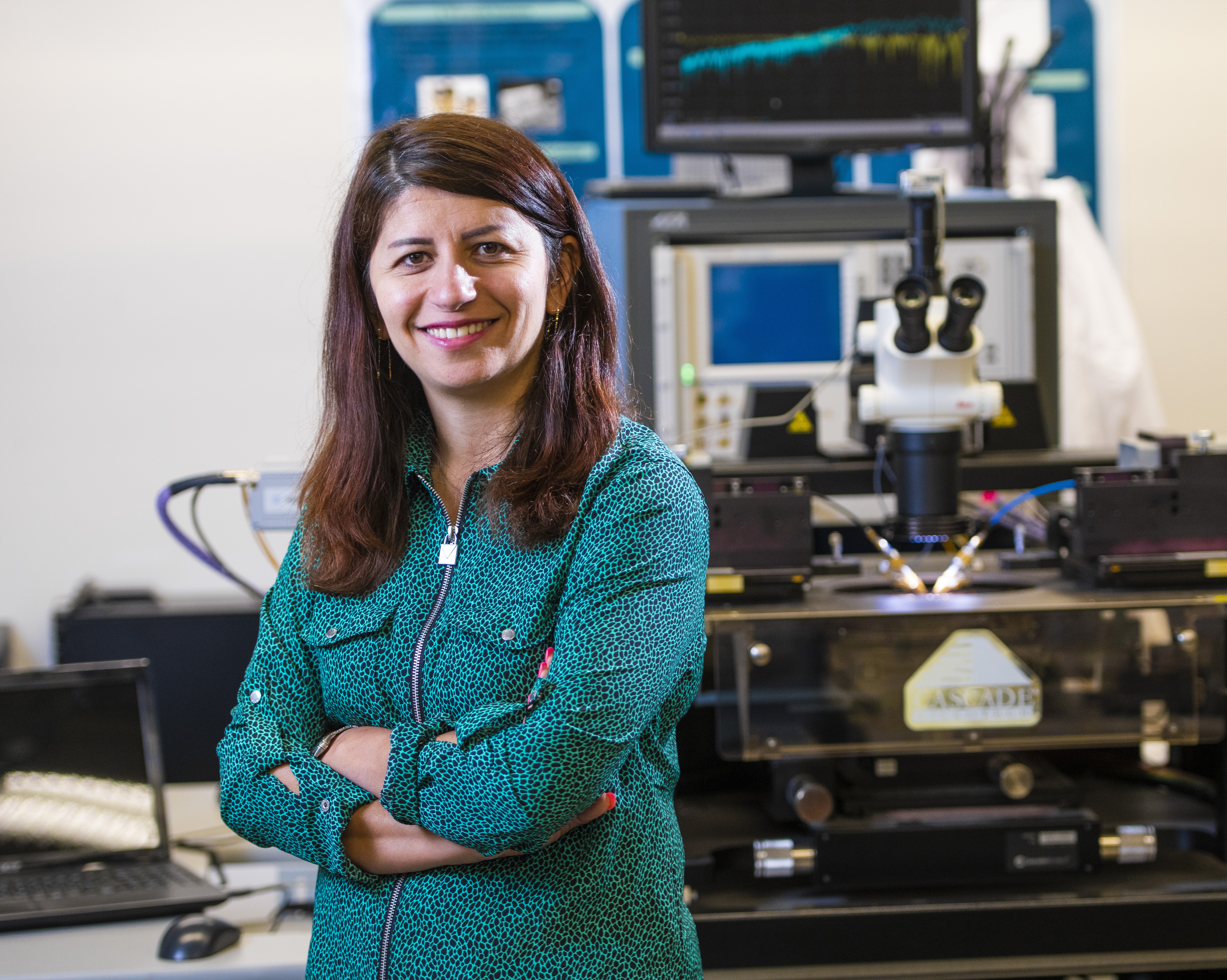University of Alberta engineer Mojgan Daneshmand’s research is about controlling waves—literally.
A Canada Research Chair in Radio Frequency Microsystems for Communication and Sensing, Daneshmand does pioneering work using micro-electromechanical systems (MEMS) and radio frequency. Her discoveries hold promise for a wide variety of smart products, from environmental sensors to wearable health monitors.
She has spent almost a decade developing microwave sensors that can track minute changes in liquids, gases or solids without coming into contact with them.
These sensors offer a significant advancement over current technology on the market: they can detect extremely small changes in minute amounts of sample— something that conventional, low-resolution microwave sensors cannot do, she says.
Daneshmand, an associate professor and leader of the Microwave to Millimetre-Wave (M2M) Lab at U of A, is working closely with industrial partners in the oil industry, through the University of Alberta and her startup, to commercialize applications for harsh environments.
“We have gone from developing the concepts to using them in real time,” she says. It is very rewarding. You get right into the challenges of making it work.”
Other applications for the sensors include automotive manufacturing, biomedical and environmental monitoring, she says.
She and her team are also advancing capability in communications, using higher frequency bands such as millimeter waves—the 30- to 300-GHz spectrum that is above standard communication frequencies. As lower frequency bands become more congested, these bands are expected to be essential for fifth-generation, or 5G technology, as well as for smart cities and the Internet of Things.
“At higher frequency the millimetre waves are less congested, but it’s more difficult to get better performance because tunability isn’t there yet,” she says. Her team are tackling these challenges by using micro- and nanotechnology to create tunable, miniaturized microwave and millimeter wave devices and components.
CMC Microsystems’ design tools and fabrication services have been very helpful in getting her work to the commercialization stage, says Daneshmand.
‘We have gone from developing the concepts to using them in real time’.
“In addition to giving us access to a variety of software at a lower price, CMC’s equipment loan program was really helpful for us in developing our RF and microwave circuits. And CMC’s funding support for our nanofabrication enabled us to make our millimetre-wave devices, and it gave my students valuable training at our university’s nanoFAB lab.” Many of her students have gone on to promising positions in industry and academia.
Daneshmand has been recognized both for the calibre of her research—most recently she received U of A’s 2018 Martha Cook Piper Research Prize for original research and outstanding promise—and for her leadership in developing talent. In 2016 she was awarded the Lot Shafai Mid-Career Distinguished Achievement Award from the IEEE Antenna and Propagation Society, “for pioneering contributions to microwave-to-millimeter-wave microsystem-based antenna and microwave technologies for communication and sensing, and being a role model for women in engineering.”
“For the students, I think it’s the excitement of the research and working together as a group,” she says. “I always make sure they go through training. They get excited when they learn more and produce more”
Photo: John Ulan/Photo Features
November 2018

